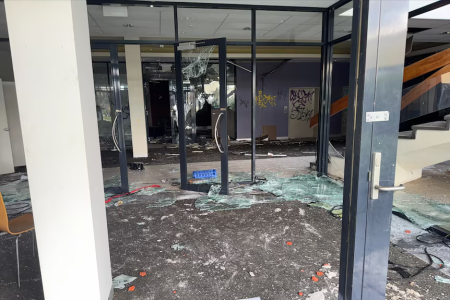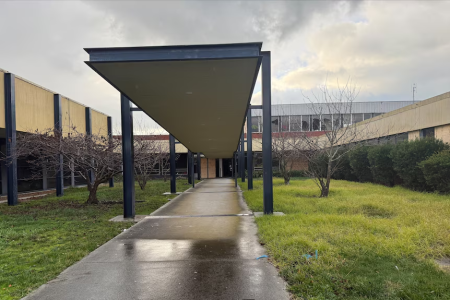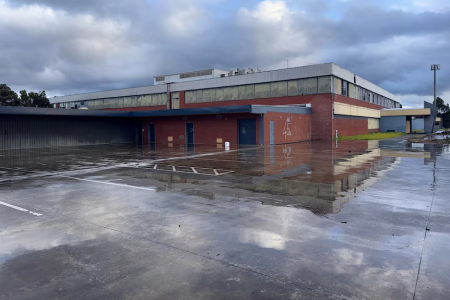Residents say former Moe Hospital could become public housing
By
ABC News
- Replies 0
The former Moe Hospital, perched on a hill in Victoria's Latrobe Valley, has sat empty and derelict for almost 30 years.
The site in Ollerton Avenue, Newborough, became a target of vandals after its closure in 1998.
Now, with the hospital site listed for sale, Moe residents want it redeveloped into much-needed public housing.
Jeff Kennett's Liberal government closed the Moe and Traralgon public hospitals in the early 1990s, replacing them with a larger hospital named Latrobe Regional Health midway between the two towns.
But the decaying former site sat idle and forgotten — its shattered windows, boarded-up doors and graffitied walls a depressing sight for residents working hard to repair the reputation of their town.
She worked at the hospital from when it opened in the 1970s up until about 12 months before it closed.
"I think the population of Moe and Newborough are quite sad that it's sitting there in such a derelict state."
Ms Redman said she would like to see the site transformed into something useful.
"Housing is very difficult, maybe it could be eventually turned into units and sold as private dwellings.
"Even somewhere for the homeless to live."
Almost 400 of those people were employed.
Nina Burke, president of Great Latrobe Park and former chair of the Save the Moe Hospital group, said the 13,651-square-metre site had potential as apartments.
"The hospital itself is quite unique; it has very broad corridors and it had good-sized wards," Ms Burke said.
"I believe it could be redeveloped into housing, and there is a pressing need for housing."
Ms Burke said the hospital was central to a number of aged-care facilities in town, and could even be used as homes for carers.
"It's a great, unused community facility.
"It has parking all around it, it's close to public transport, it's got a good view, it would lend itself well to that sort of redevelopment." She said she would not knock it down.
"Let's use this infrastructure that we've got and think about it creatively.
"It's been destroyed, so it really needs some authority to step in."
"It was a place designed for care now left to decay, and that raises real questions about designed obsolescence, waste and short-term thinking in design," Professor Pert said.
"It's not just an empty building; it's a sign of deeper systemic neglect."
He said it was not just a story about a single hospital.
"It's a story about how we care for a place, or fail to, and how the life and afterlife of buildings are entangled with the health of our communities, both physically and socially.
"They become landmarks not of progress but of abandonment, capturing a collective memory of lost services, shrinking investment in regional areas and the costs of policy change.
"They can foster feelings of neglect and social fragmentation, particularly in places like Newborough, where communities often feel left behind by broader economic transitions."
By Jack Colantuono
The site in Ollerton Avenue, Newborough, became a target of vandals after its closure in 1998.
Now, with the hospital site listed for sale, Moe residents want it redeveloped into much-needed public housing.
Jeff Kennett's Liberal government closed the Moe and Traralgon public hospitals in the early 1990s, replacing them with a larger hospital named Latrobe Regional Health midway between the two towns.
But the decaying former site sat idle and forgotten — its shattered windows, boarded-up doors and graffitied walls a depressing sight for residents working hard to repair the reputation of their town.
Site in sad state
Retired nurse Judy Redman said she had watched the building deteriorate over many years.She worked at the hospital from when it opened in the 1970s up until about 12 months before it closed.
"I think the population of Moe and Newborough are quite sad that it's sitting there in such a derelict state."
Ms Redman said she would like to see the site transformed into something useful.
"Housing is very difficult, maybe it could be eventually turned into units and sold as private dwellings.
"Even somewhere for the homeless to live."
Housing need
According to the Gippsland Homelessness Network (GHN), 3,644 households accessed homelessness services in Morwell, Warragul, Leongatha, Yarram, Sale, Bairnsdale and Orbost in 2024-25.Almost 400 of those people were employed.
Nina Burke, president of Great Latrobe Park and former chair of the Save the Moe Hospital group, said the 13,651-square-metre site had potential as apartments.
"I believe it could be redeveloped into housing, and there is a pressing need for housing."
Ms Burke said the hospital was central to a number of aged-care facilities in town, and could even be used as homes for carers.
"It's a great, unused community facility.
"It has parking all around it, it's close to public transport, it's got a good view, it would lend itself well to that sort of redevelopment." She said she would not knock it down.
"Let's use this infrastructure that we've got and think about it creatively.
"It's been destroyed, so it really needs some authority to step in."
Left to rot, expert says
University of Melbourne professor Alan Pert said the hospital site was a powerful symbol of how quickly public buildings could become obsolete."It was a place designed for care now left to decay, and that raises real questions about designed obsolescence, waste and short-term thinking in design," Professor Pert said.
"It's not just an empty building; it's a sign of deeper systemic neglect."
He said it was not just a story about a single hospital.
"It's a story about how we care for a place, or fail to, and how the life and afterlife of buildings are entangled with the health of our communities, both physically and socially.
"They become landmarks not of progress but of abandonment, capturing a collective memory of lost services, shrinking investment in regional areas and the costs of policy change.
"They can foster feelings of neglect and social fragmentation, particularly in places like Newborough, where communities often feel left behind by broader economic transitions."
By Jack Colantuono











